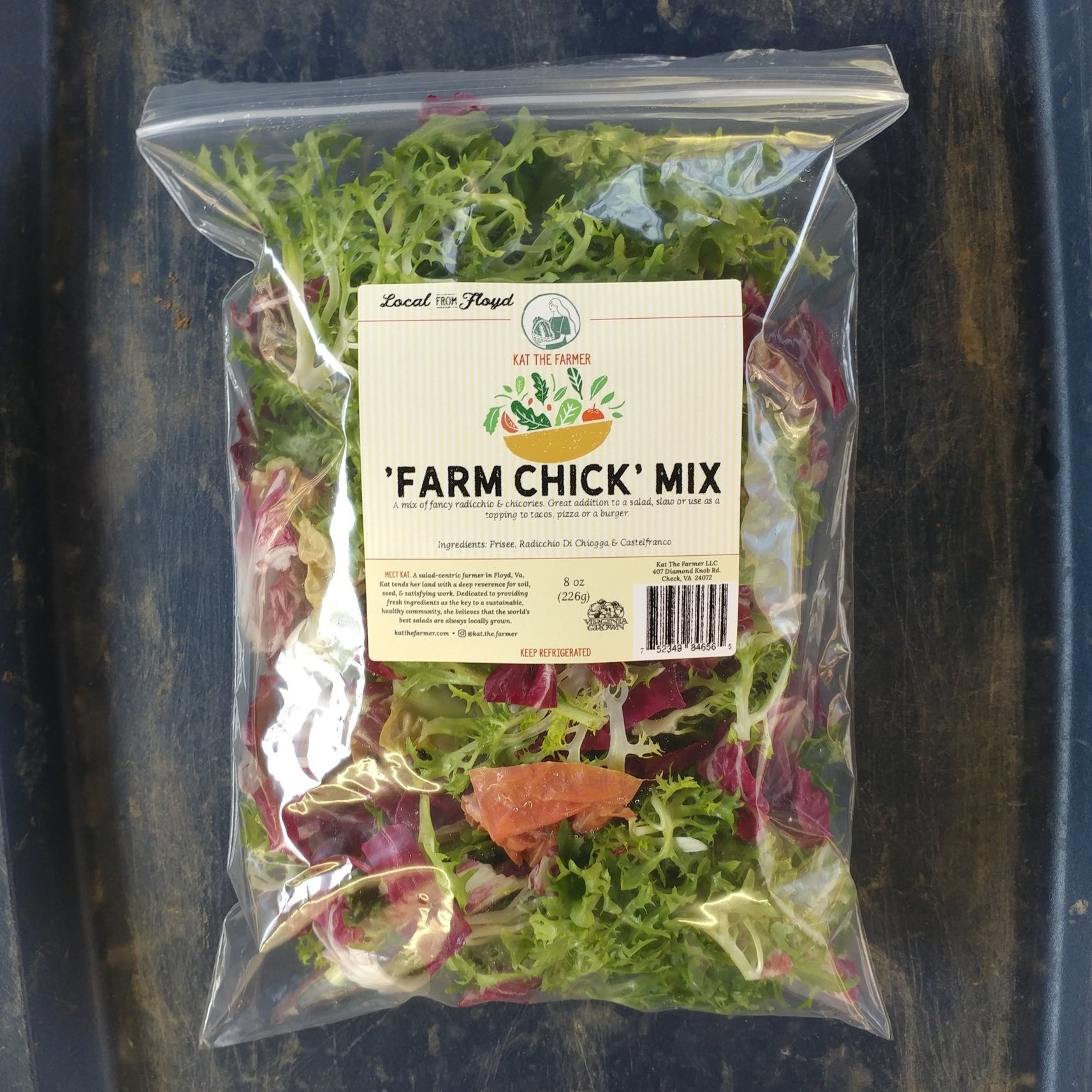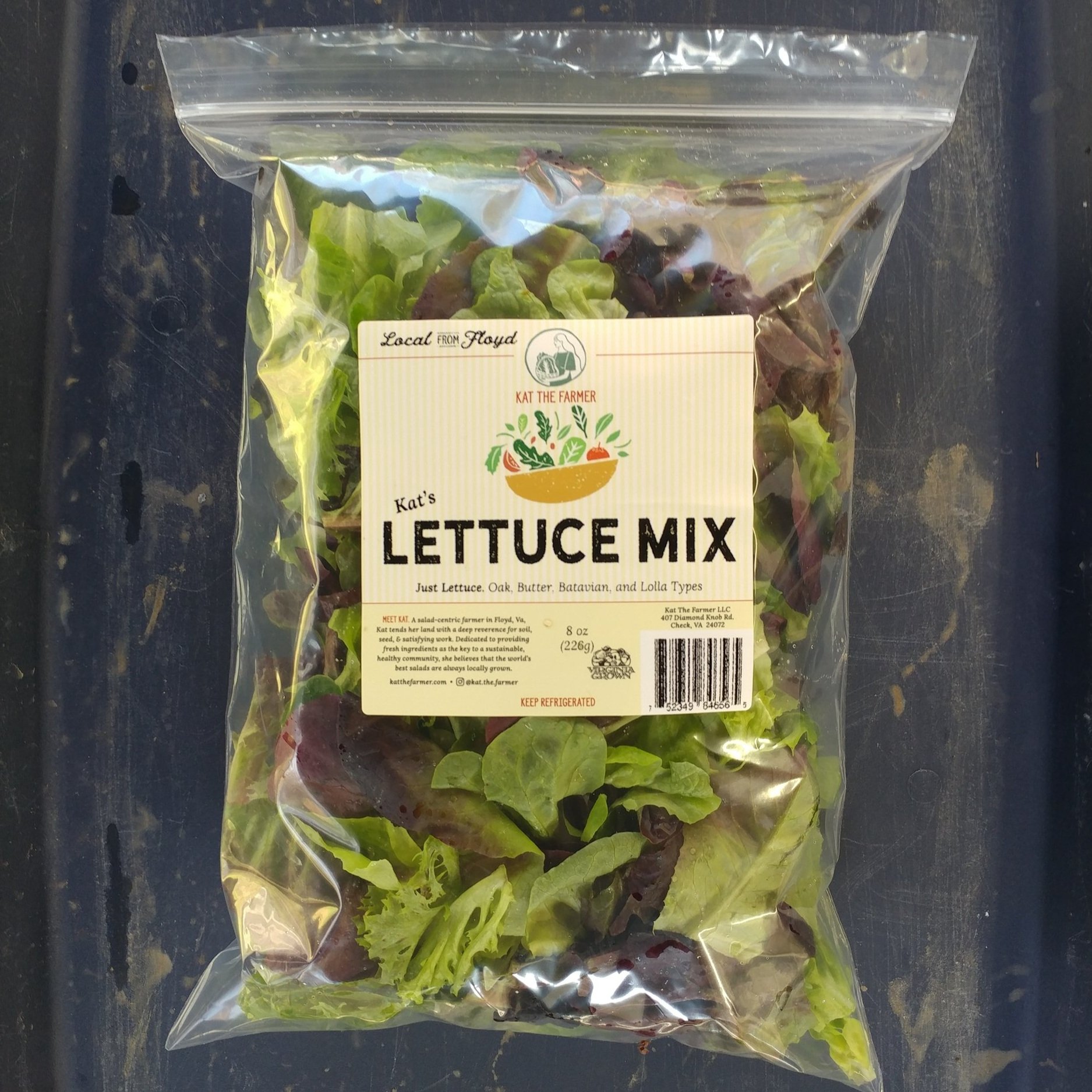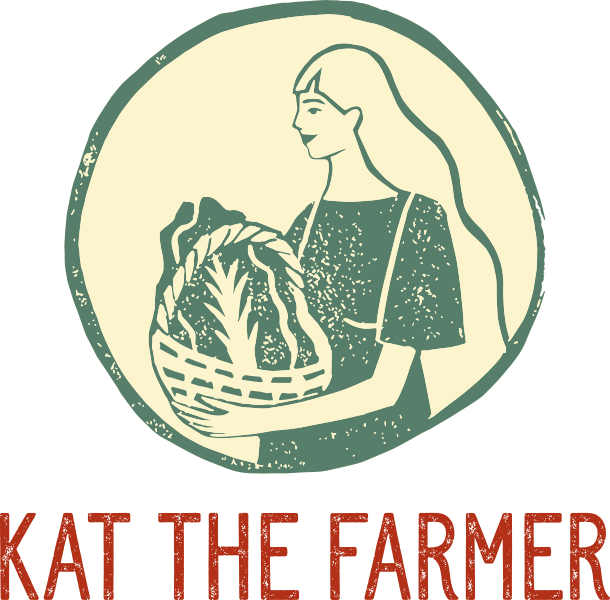Produce Labels
If you are looking into printing color labels for your produce bags or boxes, or other packaged goods, you probably have a few considerations like waterproof material, nice feel, specific dimensions, cute design and most importantly, cost per label.
Savings in Numbers
It doesn’t take long when pricing out labels to realize that there is savings in large quantities. This is because the set up for each label run is the most expensive step, so printing 2,000 is often just a few dollars more than printing 1,000 would be. That being the case…its time to start thinking of ways to print your labels in large quantities! Right?
I came to the same conclusion. Instead of printing a separate roll of labels for each product (think: arugula, baby kale, lettuce mix, spinach, salad kit, salad toppings etc), I designed one label and left space for variable content to be added at home.
I worked with a professional designer to set up my label design so that it matched my branding and other products. You can learn more about the design firm at https://www.h2ostreet.com/
This is what my ‘base label’ looks like. See all that extra space in the middle? and the white corner? Those areas will be filled in later with variable content. Do you add a traceback code or best by date? You too have variable content that might benefit from using this hybrid approach.
Label Meets Printer
The biggest consideration when deciding to order a gazillion base labels to save money is…is this label compatible with my home printer?
Your options to consider might look something like this:
Rolls vs. Sheets
Inkjet, Laser, Thermal Transfer, Direct Thermal, to name a few.
Label Lamination Type- This is the top surface of the label that will hold the ink. List of Options on the market
Its important to request samples from the label supplier you are working with to do a test run with your specific printer. You will need to make sure that your ink adheres to the lamination, and that it is scuff and water resistant too. You should also test the size of the printed text you will be printing to make sure it is readable at that scale. Nobody likes to print labels and then have to air dry them so they dont smudge. Adhesive options are also important when thinking about storing product in a humid cold environment like a fridge or freezer, so test for that too.
I guess I should mention that if you are doing more than 20 labels per week, an inkjet/laser printer will be a waste of time. Really any at-home color printer will not be able to keep up with the amount of printing you will be doing in an affordable, or ecological way. You will just be wasting money on ink refills and getting poor quality labels. This is why I printed a full color base label, and designed it with black text in mind since the thermal transfer printer I got only does black.
What I Chose
I decided to work with a company called Lightening Labels that offered two options for Thermal Transfer Laminant- a glossy and a matte surface. I chose the matte because it had a nice feel and was even more scuff resistant than the glossy.
The labels come on 3’’ cores and the labels themselves are 4’’ wide (the maximum for my printer) I also had to request that they only spool-on 1’’ worth of labels to each roll so that they would fit inside my printer.
What kind of printer? I went with a Zebra GK420t which can do both Direct Thermal (like a classic reciept machine or B&W shipping label) but it can also do Thermal Transfer (which requires a spool of wax resign that transfers onto the label with the addition of heat as it prints). The Zebra printer was under 200.00 on ebay, and the wax ribbon can be found on Amazon (specific product name: 9 Roll Wolfbarco 4.33" x 243' (110mm x 74m) Premium Resin-Enhanced Wax Thermal Transfer Ribbon for Zebra Desktop Printer TEC, DATAMAX, INTERMEC, Citizen, SATO, TSC, GODEX, ARGOX)
What I like about the Zebra printer is that you can set it up to print really fast (speed is adjustable).
What I don’t like is that you can only use the ribbons once, and sometimes you end up wasting a lot of labels when you are testing things out (I warned you!)
So, I use a full color 4x4 BoPP Label with Matte Thermal Transfer Laminate from Lightening Labels, and a GK420t thermal transfer printer with resin enhanced wax ribbon.
Cost
So the last time I ordered (2021) the costs were
@ 1,000 : 42 cents Each
@ 2,000: 32 cents each
@ 4,000: 26 Cents Each
Not including my ribbon cost, or my own in-house labor to add text to each label. ;)



Printing SOftware?
After all my testing and finally deciding on my materials I came up against a problem…Zebra printers have a proprietary software that does not work on mac, or maybe I was just too cheap to buy it. But I found a work around that I have detailed in this Youtube Video.

